A circular solution for a happier community
Roundabouts are the best traffic feature you’ve never heard of. They reduce air pollution, increase traffic flow, reduce serious traffic accidents, improve the livability of the community, and reduce city costs, freeing city budget for other priorities.
Read on to learn more about what they are and why so many cities in the US and around the world are switching their traditional intersections to roundabouts.
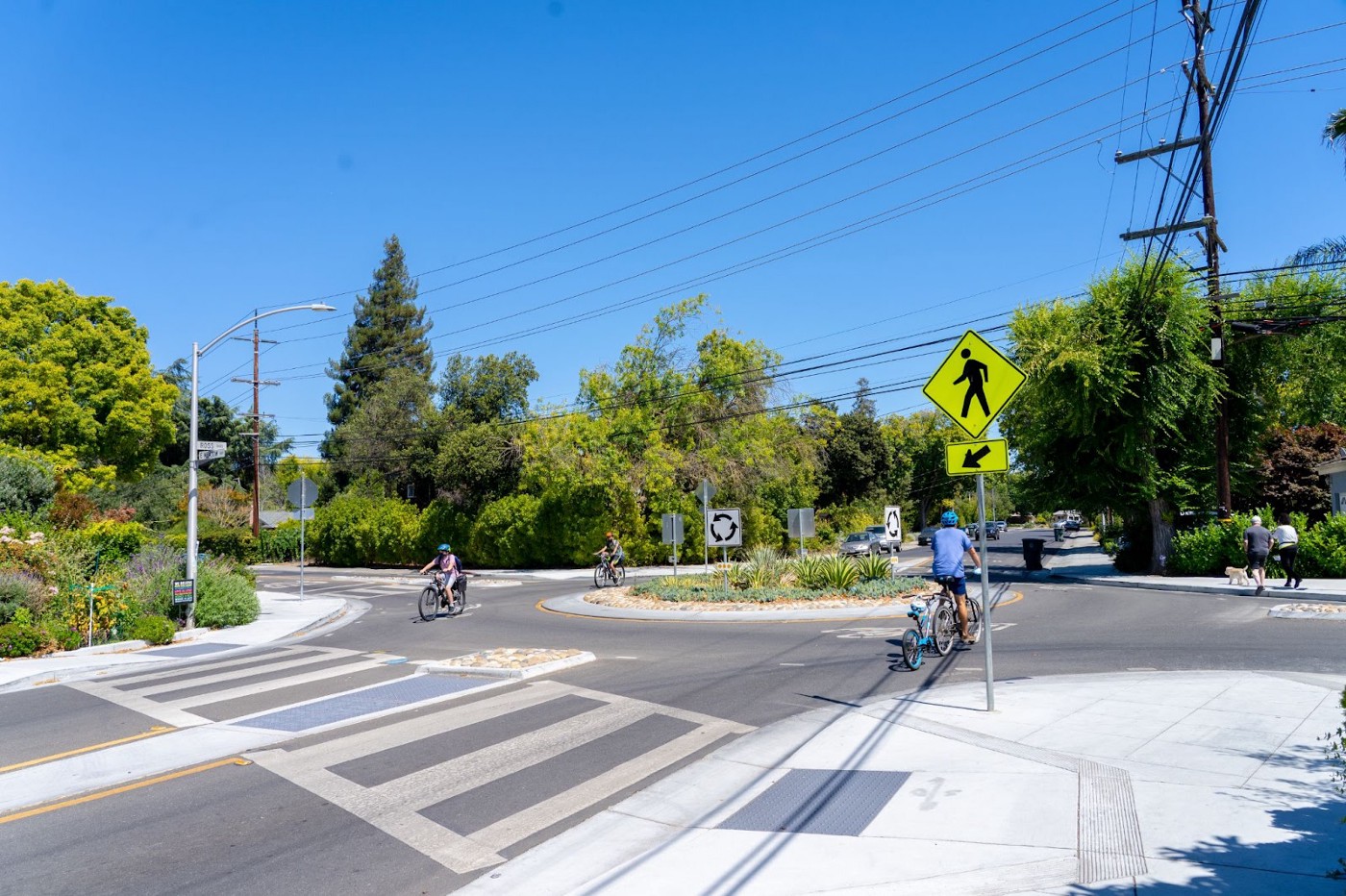
Roundabouts come in all sizes from small neighborhood ones to large multi-lane ones.
What is a Roundabout
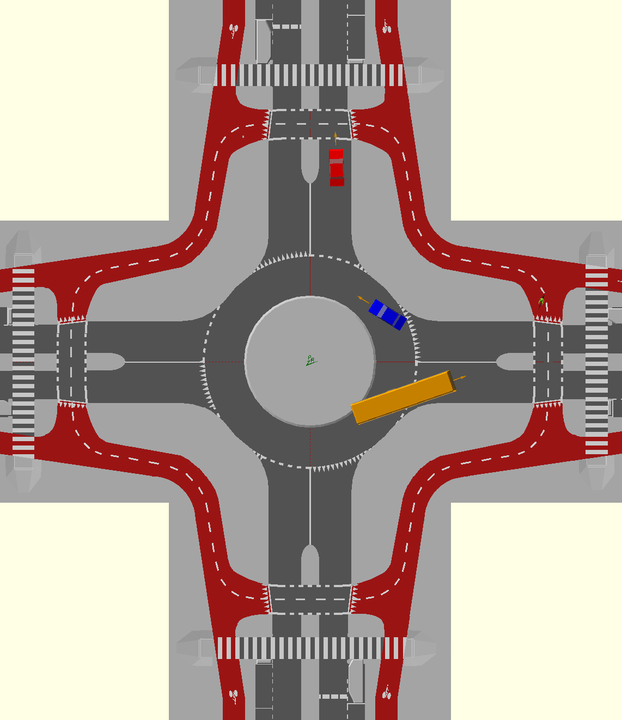
An example of a Dutch-style roundabout.
A roundabout is an alternative to a traditional intersection with traffic lights or stop signs. Roundabouts are circular intersections where cars go around a circular landscaped island.
They are not the same as the traffic circles seen in many American towns. A traffic circle is a series of “T intersections” with a circle road. Each “T” intersection may be controlled differently. In contrast, a roundabout is a series of “crossing intersections” where the entering traffic is controlled by yield signs. In a roundabout, you enter and exit at an angle. In an accident, that’s the difference between a T-bone and a sideswipe.
The Dutch roundabout is considered the gold standard in roundabout design as it considers the safety of cars, bikes, and pedestrians alike. In a Dutch-design roundabout, bikes and pedestrians cross each lane at a distance a few feet offset from the roundabout circle so that cars entering and leaving the roundabout have clear visibility of cyclists and pedestrians in front of them instead of in their blind spot.
Benefits of Roundabouts
Reduced pollution – Driving through a typical intersection usually includes a complete stop, idling, then acceleration to proceed through the intersection. With a roundabout, the stop may be eliminated. The reduction in stop/start driving, fuel consumption, and idling reduces harmful emissions and improves the air quality.
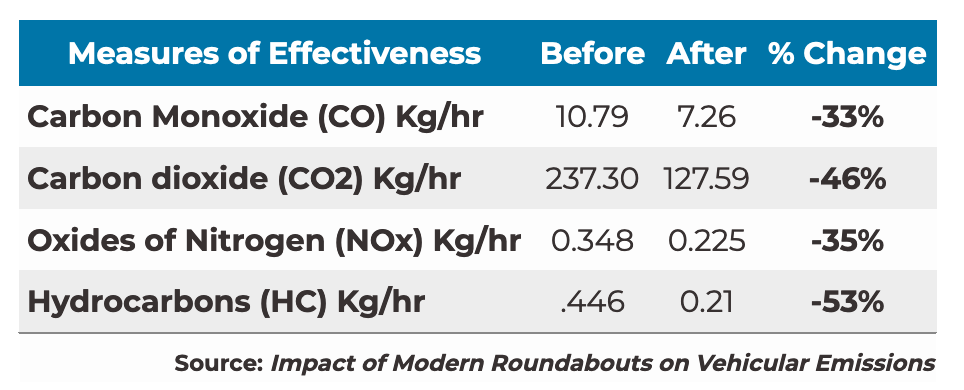
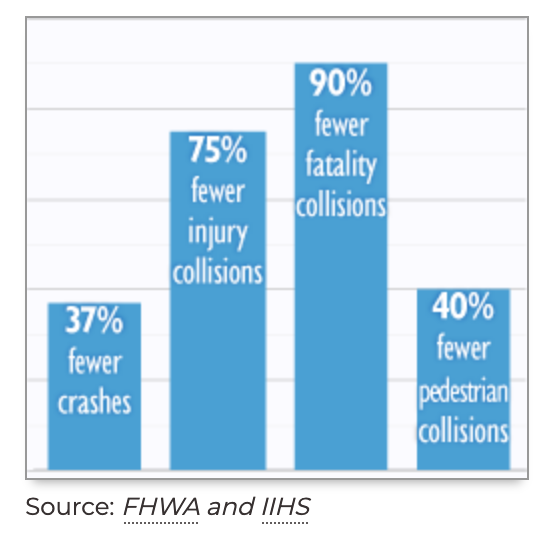
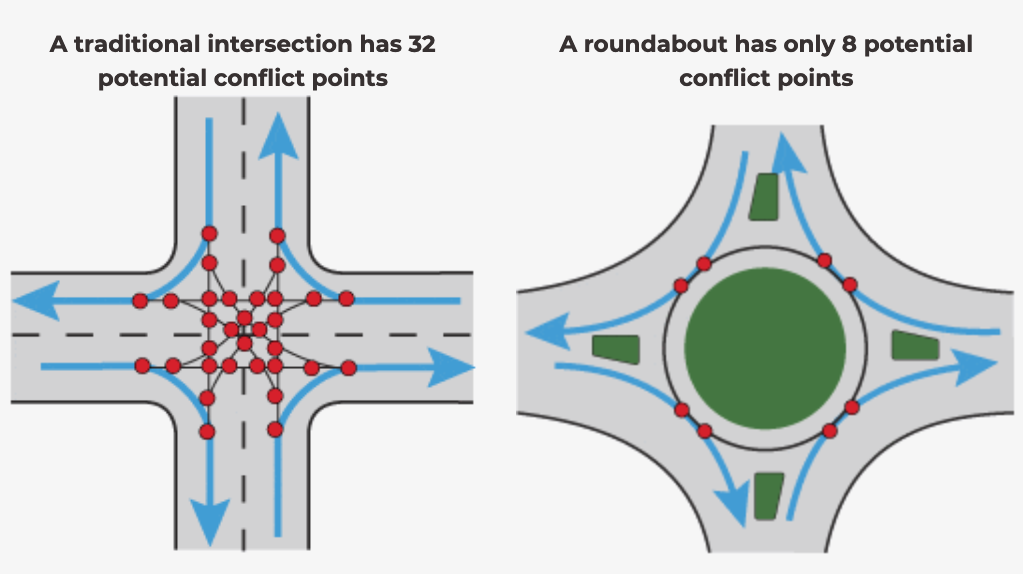
Reduced number and severity of crashes – According to a study by the Institute for Highway Safety of locations where stop signs or traffic lights were replaced by roundabouts, all crashes were reduced by 37% and serious crashes fell by 75%, including a 90% reduction in fatalities. This means not only fewer crashes, but also most people will be able to walk away from them.
At traditional intersections, some of the most common types of crashes are right-angle, left-turn, and head-on collisions. These types of collisions can be severe because vehicles may be traveling through the intersection at high speeds to “beat the red light.” With roundabouts, these types of potentially serious crashes essentially are eliminated because vehicles travel in the same direction.
Increased pedestrian and bike safety – Larger roundabouts include well-defined bike paths and pedestrian walkways offset by several feet from the car lanes. As a result, cars approach pedestrians and cyclists at a right angle and at slower speeds, increasing visibility and reducing the number and severity of accidents.
Improved traffic flow – A roundabout allows more traffic to flow through in the same amount of time, as shown by the Mythbusters test which found roundabouts provide a 20% improvement in traffic flow over a traditional 4-way stop. Unlike traditional intersections, a roundabout does not require cars to come to a complete stop or idle, which reduces both individual delay and delays resulting from vehicle queues.
A roundabout also operates more efficiently than a signalized intersection because drivers are able to enter from different approaches at the same time when traffic is clear without needing to wait for the traffic light to change.
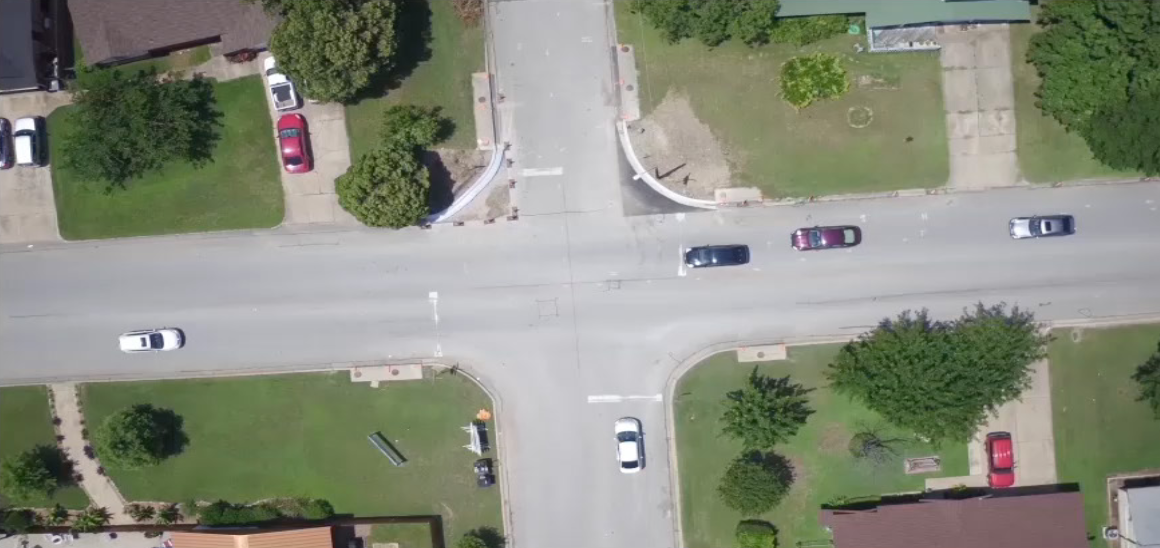
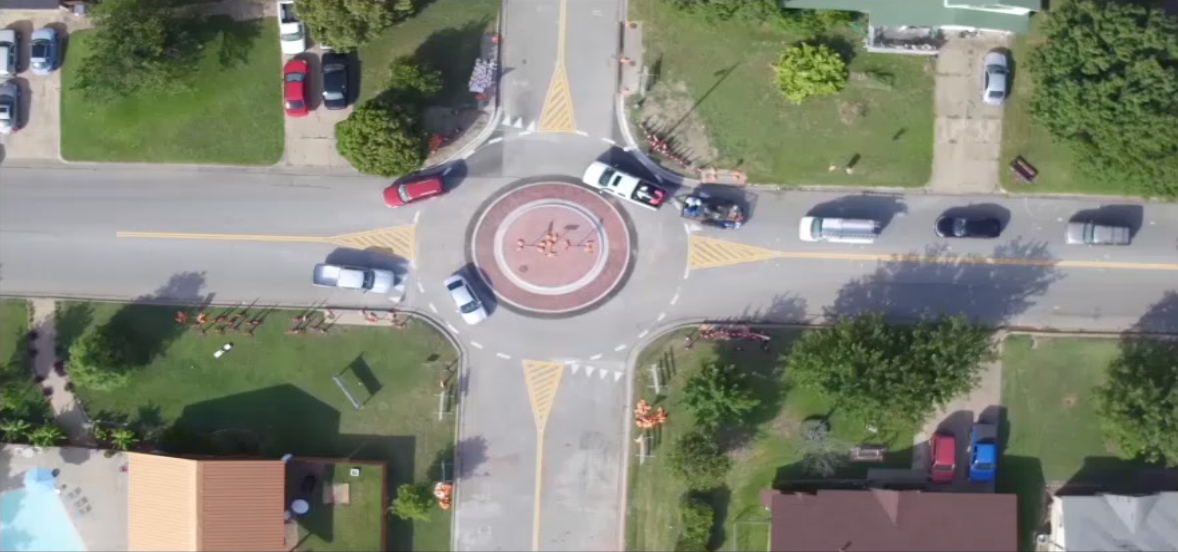
A 4-way intersection before and after.
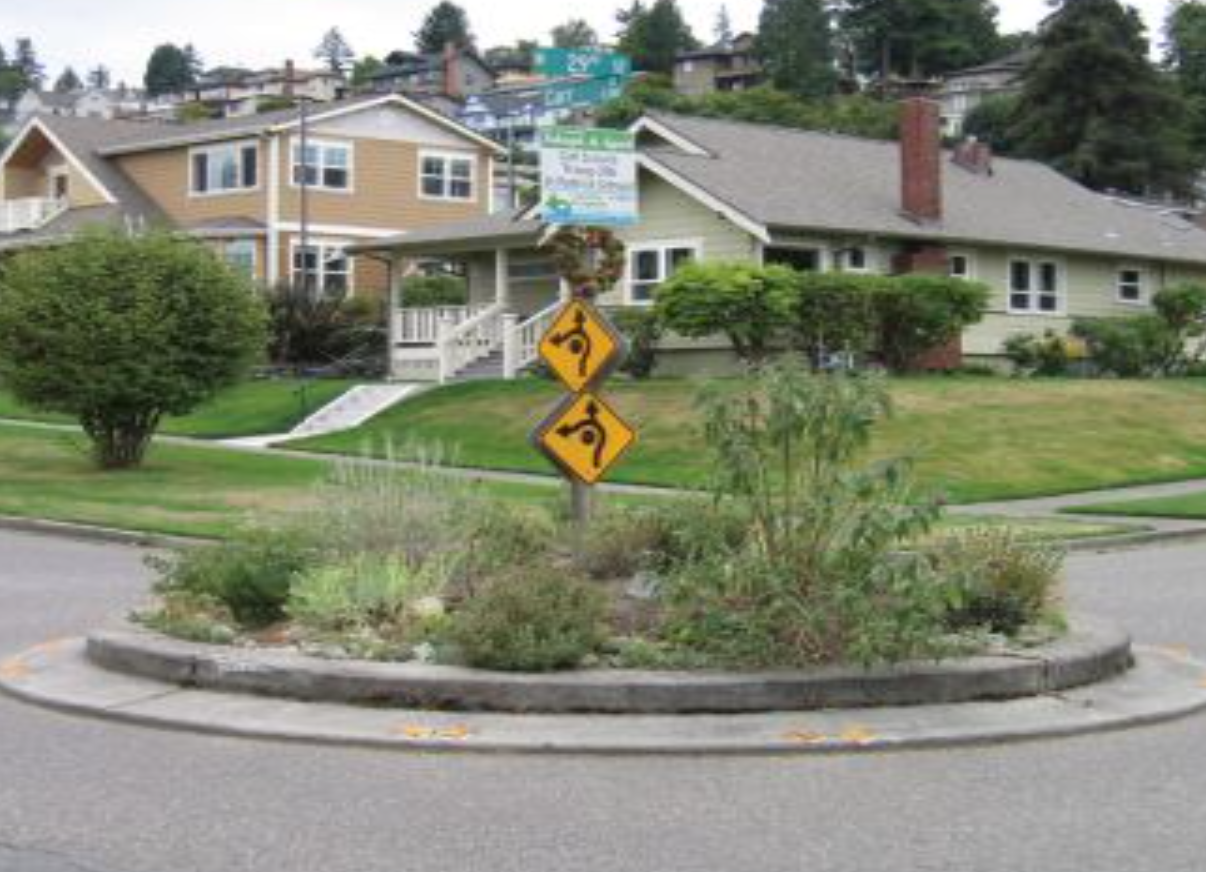
A more livable community – Roundabouts are used very effectively by many towns for traffic calming by slowing down cars without the use of traffic signals or teeth-rattling speed bumps. They often include a landscaped center island which adds to the aesthetic value of the neighborhood and increases the amount of green space.
Another advantage of roundabouts is that if traffic flows smoothly, roads need fewer lanes. This results in more attractive streets that are also safer for pedestrians and cyclists.
City cost savings – Signalled intersections and traffic lights are much more expensive to install and maintain, compared to roundabouts. This makes roundabouts cost effective solutions.
How to Navigate a Roundabout
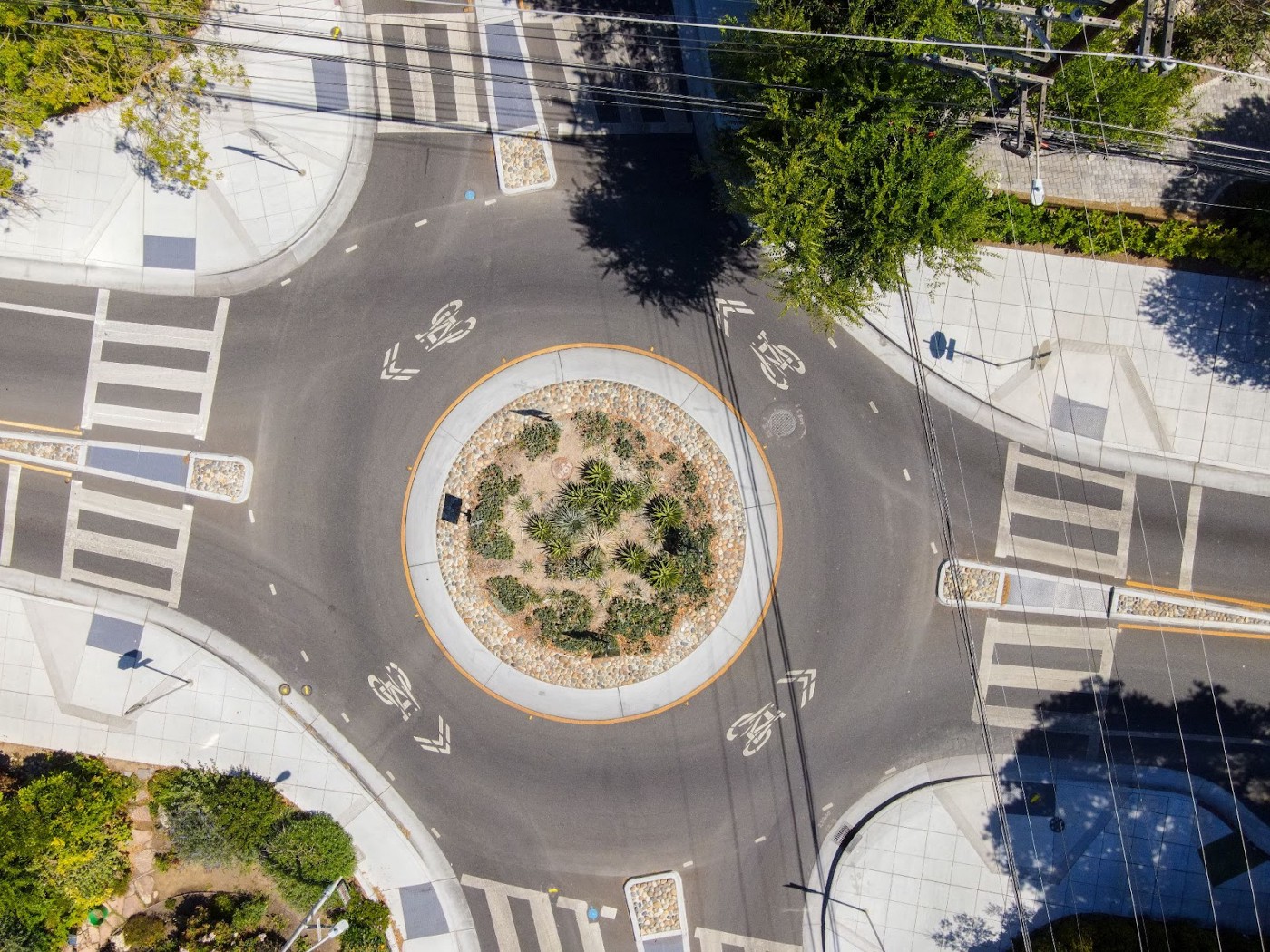
Cars enter a roundabout at an angle, going counterclockwise, and yielding to cars coming from the left. If there is no traffic, cars are not required to stop, just proceed at a slow speed through the roundabout. If it’s a bigger roundabout, cyclists and pedestrians use the bike lanes and sidewalks that go around the roundabout.
In a smaller roundabout, cyclists share the road with cars and should ride in the middle of the lane. Both cars and cyclists should stay in the same lane to enter and exit the roundabout.
Roundabouts Are Becoming More Popular
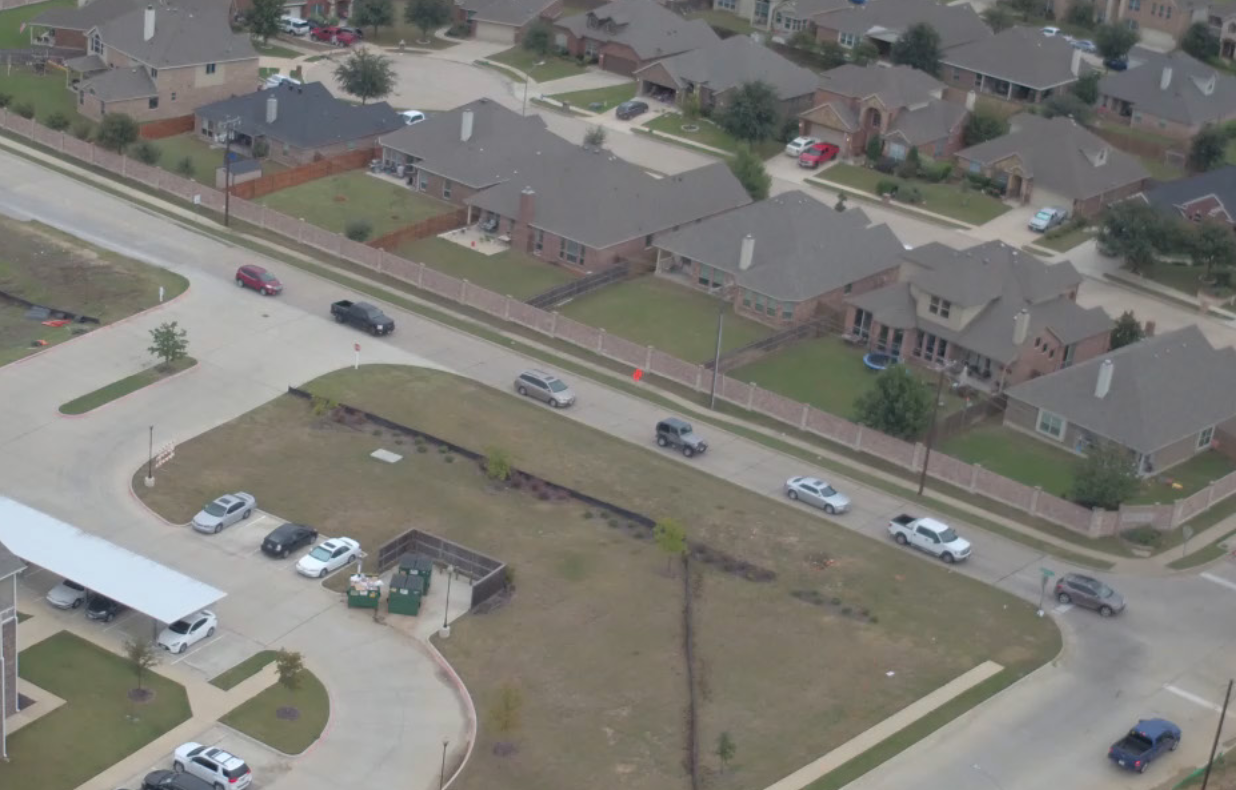
A traditional 3-way intersection.
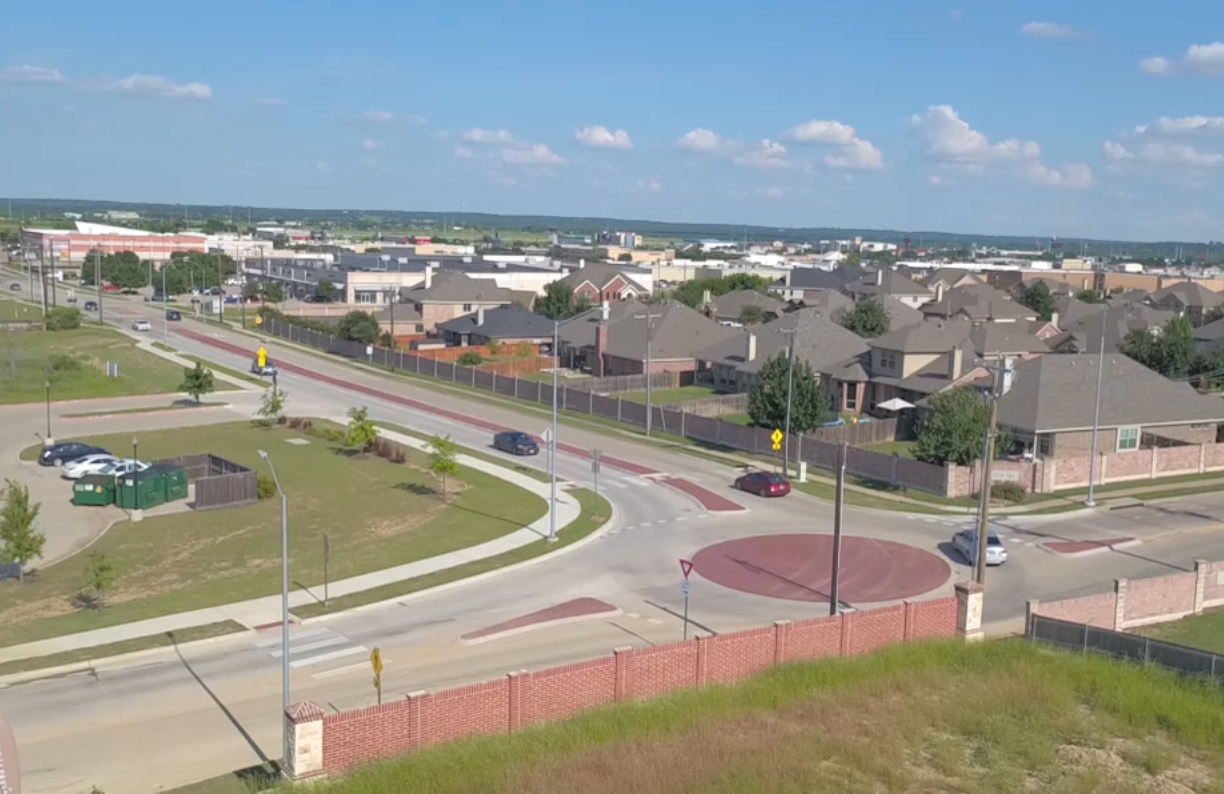
The 3-way intersection transformed into a roundabout.
Roundabouts are increasingly becoming the preferred choice for intersections because of the multiple benefits they offer. However, the US lags the rest of the world in adopting roundabouts. There are only 4,000 roundabouts in the U.S., and over 300,000 signalized intersections. In contrast, there are over 30,000 roundabouts in France, and 25,000 in the UK.
Still, more and more cities around the US are increasingly switching to roundabouts. Since the late 1990’s, Carmel, Indiana, has been building and replacing signalized intersections with roundabouts. Carmel now has more than 138 roundabouts, more than any other city in the United States. As a result, the number of injury accidents in Carmel has been reduced by about 80 percent and the number of accidents overall by about 40 percent.
In the Bay Area, many cities are converting intersections to roundabouts. Berkeley and Palo Alto are leaders in this movement. Berkeley already has 62 roundabouts and the city’s bike plan recommends the creation of 42 new ones. Palo Alto is working on 11 neighborhood roundabouts with plans for more to come.
Can Cupertino be Next?
Which intersections in your neighborhood do you think would benefit from a roundabout?
Send us your thoughts! Tell us which intersection would be a good candidate and why. If we get enough community input, we’ll publish a map showing reader suggestions in our next newsletter.
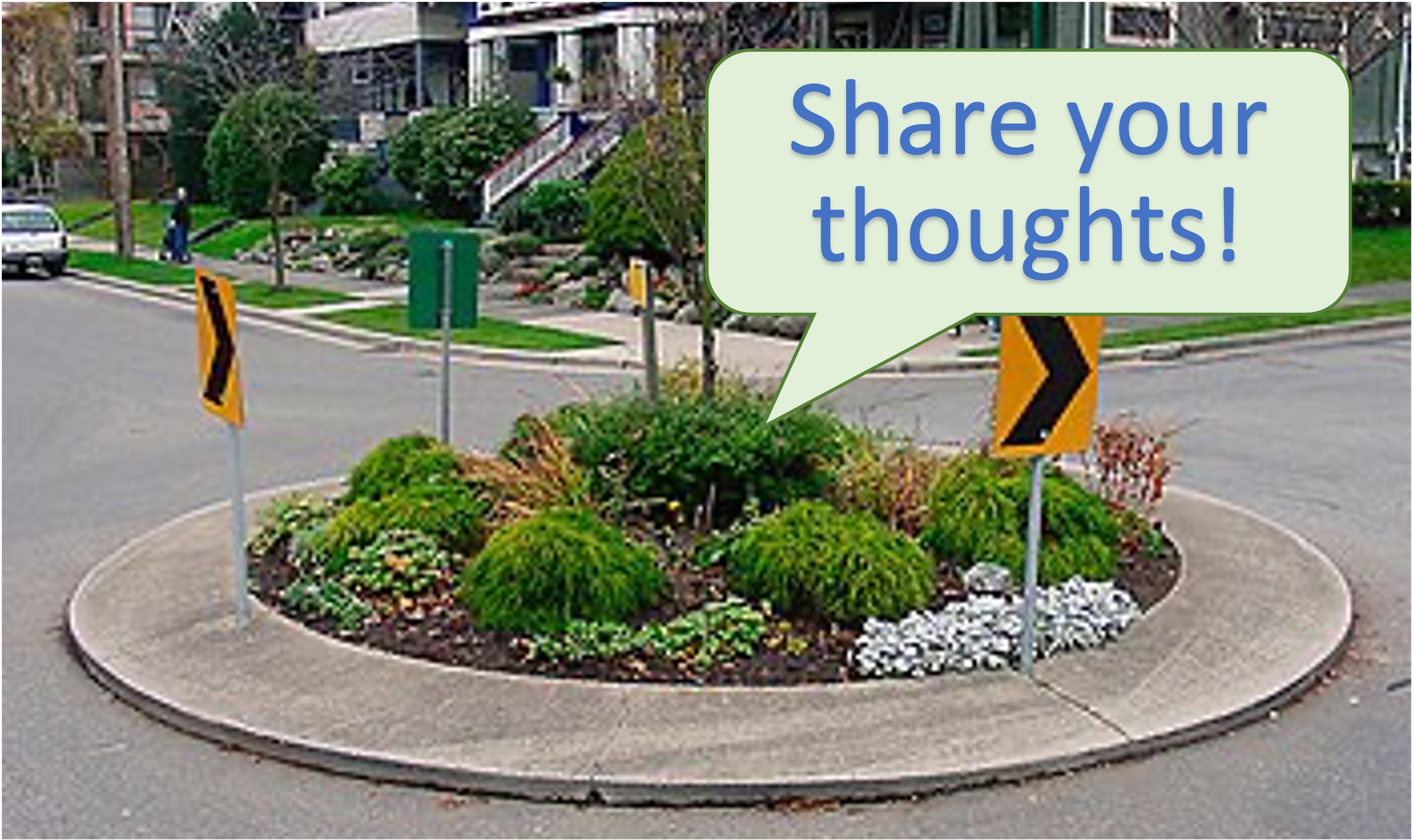

I grew up with roundabouts, and was quite disappointed to see that they are not as popular in the US as they are in other countries. I would love to have many of our 4 way stop signs replaced by roundabouts as soon as we can!